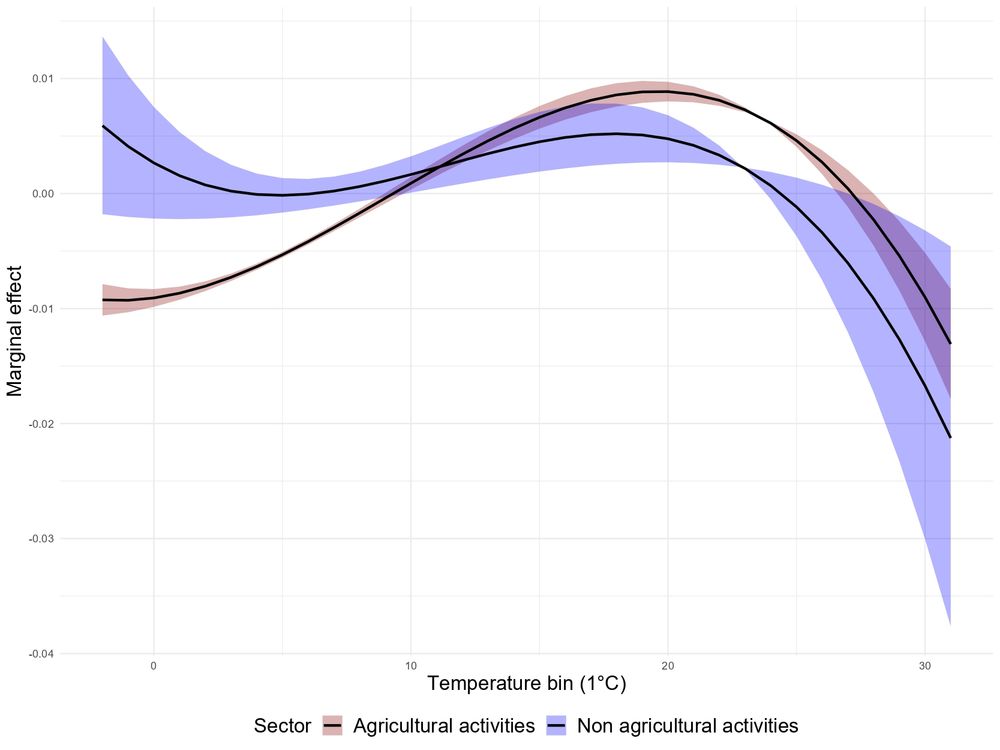https://romainfillon.github.io/
🅑 Amazon’ endogenous dynamics implies a SCDS that is worth 16% of the standard stochastic SCC.
🅒 These results imply that a 24% increase in the marginal value of a tCO2 stored in the rainforest should be applied in local cost-benefit analysis of deforestation.

🅑 Amazon’ endogenous dynamics implies a SCDS that is worth 16% of the standard stochastic SCC.
🅒 These results imply that a 24% increase in the marginal value of a tCO2 stored in the rainforest should be applied in local cost-benefit analysis of deforestation.
2 key policy results:
🅐 Amazon’ endogenous dynamics implies a 15% risk premium on the social cost of carbon (SCC) at the global scale. This money could be leveraged to fund REDD+ mechanisms or Lula’s Amazon Fund.

2 key policy results:
🅐 Amazon’ endogenous dynamics implies a 15% risk premium on the social cost of carbon (SCC) at the global scale. This money could be leveraged to fund REDD+ mechanisms or Lula’s Amazon Fund.
Ⓒ We provide a stylized calibration of CS’ dynamics, that go beyond direct impacts from deforestation (e.g. degradation, stochastic droughts, vegetation-rainfall feedbacks). For illustration, we simulate below the carbon losses along (unoptimized) SSP.

Ⓒ We provide a stylized calibration of CS’ dynamics, that go beyond direct impacts from deforestation (e.g. degradation, stochastic droughts, vegetation-rainfall feedbacks). For illustration, we simulate below the carbon losses along (unoptimized) SSP.
CS influence policy via 3 channels:
1️⃣ CS have a direct feedback on climate, e.g. tipping elements (® A. McKay et al.) ↑ or ↓ global and regional temp. This is usually accounted for by economists, even if deterministic & without explicit CS geophysical dynamics.

CS influence policy via 3 channels:
1️⃣ CS have a direct feedback on climate, e.g. tipping elements (® A. McKay et al.) ↑ or ↓ global and regional temp. This is usually accounted for by economists, even if deterministic & without explicit CS geophysical dynamics.
We study climate subsystems (CS) with 3 properties:
➊ CS impact climate change (CC).
➋ CC impacts CS.
➌ CS aren’t entirely determined by CC.
🌱 Examples: tipping elements & large systems without tipping property like some rainforests (® A. Mc Kay, A. Staal).


We study climate subsystems (CS) with 3 properties:
➊ CS impact climate change (CC).
➋ CC impacts CS.
➌ CS aren’t entirely determined by CC.
🌱 Examples: tipping elements & large systems without tipping property like some rainforests (® A. Mc Kay, A. Staal).
I am a 4th-year PhD candidate in Economics at Université Paris-Saclay, France (CIRED & PSAE), specializing in climate uncertainties.
How should climate subsystems (CS) be accounted for?
In JMP 2, with amazing Pr. Céline Guivarch, we explore this question.
A 🧵! ⬇️

I am a 4th-year PhD candidate in Economics at Université Paris-Saclay, France (CIRED & PSAE), specializing in climate uncertainties.
How should climate subsystems (CS) be accounted for?
In JMP 2, with amazing Pr. Céline Guivarch, we explore this question.
A 🧵! ⬇️
Biophysical channels influence both aggregate and distributional outcomes.
They account for 2.4% of total impacts under SSP2-4.5.
They also intensify the regressive effects of climate change, disproportionately impacting lower-income regions.

Biophysical channels influence both aggregate and distributional outcomes.
They account for 2.4% of total impacts under SSP2-4.5.
They also intensify the regressive effects of climate change, disproportionately impacting lower-income regions.
Without biophysical impacts, nearly all regions face welfare losses.
Climate change offers no/few benefits in the Northern Hemisphere.
Damages aren't linear relative to a constant temperature downscaling factor close to polar amplification

Without biophysical impacts, nearly all regions face welfare losses.
Climate change offers no/few benefits in the Northern Hemisphere.
Damages aren't linear relative to a constant temperature downscaling factor close to polar amplification
Departing from global annual averages, I interact intra-annual climate projections with non-linear damage on amenities (left) and sectoral productivities (right) that are estimated from the eq. conditions of the model, in line with climate adaptive response literature.


Departing from global annual averages, I interact intra-annual climate projections with non-linear damage on amenities (left) and sectoral productivities (right) that are estimated from the eq. conditions of the model, in line with climate adaptive response literature.
These biophysical feedbacks can reduce or amplify warming depending on location and season (cf. illustrations from G. Duveiller et al., D. Zhou et al.).
The feedback alter temperature impacts, affecting the spatial distribution of economic activity and population.


These biophysical feedbacks can reduce or amplify warming depending on location and season (cf. illustrations from G. Duveiller et al., D. Zhou et al.).
The feedback alter temperature impacts, affecting the spatial distribution of economic activity and population.
Quantitative spatial models overlook these regional feedbacks, focusing on global carbon effects.

Quantitative spatial models overlook these regional feedbacks, focusing on global carbon effects.

